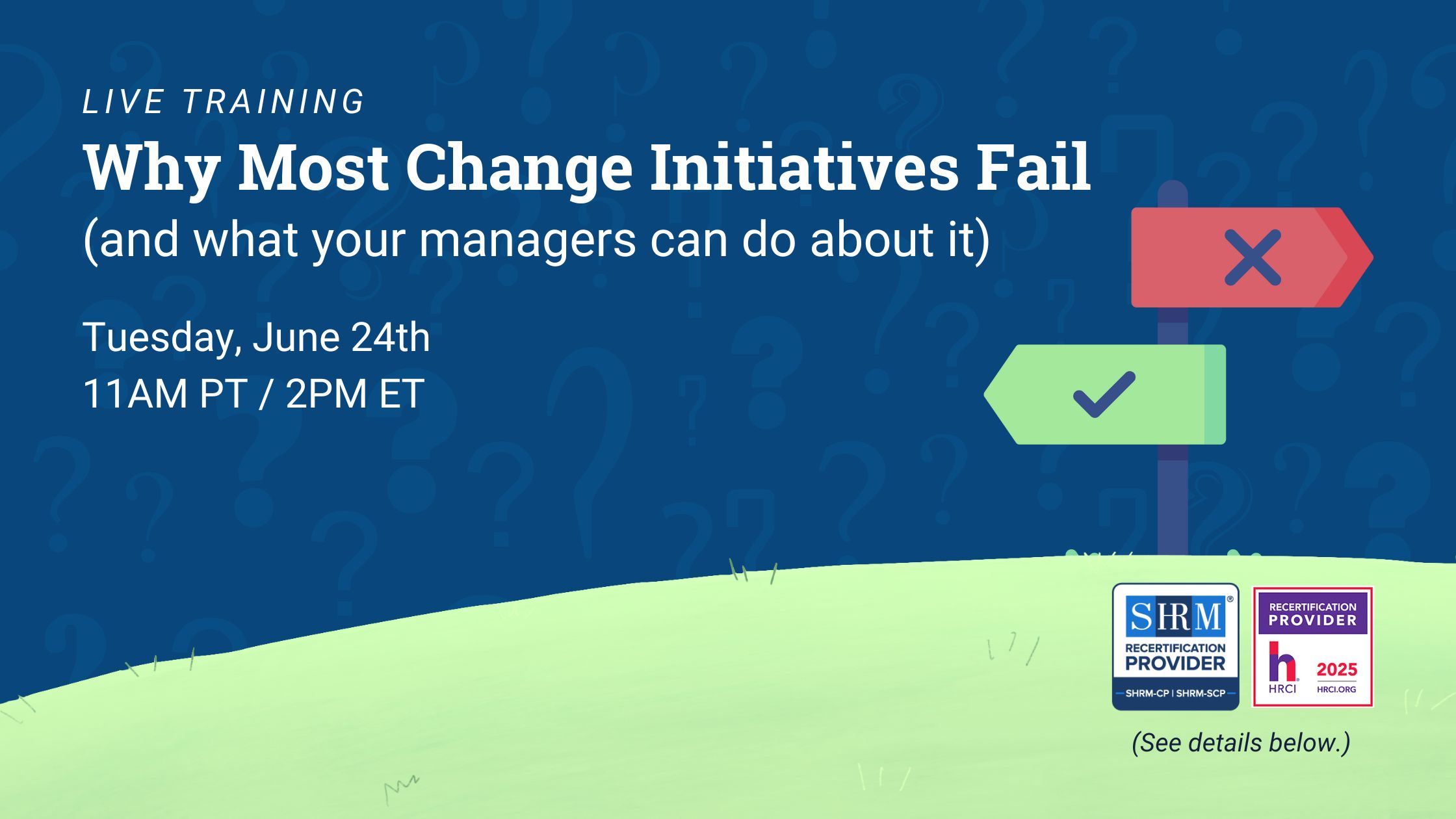The unstable economy has prompted employers nationwide to re-evaluate their organizational structures. This means we can expect to see more company reorganizations across the map, with some businesses closing plants and offices and others filing for bankruptcy.
In the last few years, organizational changes have become quite common: Gartner considers organizational change “the new constant,” with the typical organization undergoing five firm-wide changes in the last three years. Companies unprepared for such overhauls risk diminishing their employer brand and could suffer low morale and voluntary turnover. Wondering what the different types of organizational change are and how to deal with them effectively? Read on for a complete overview.
What Is Company Reorganization?
Company reorganization, also known as corporate reorganization or corporate restructuring, refers to the process of making significant changes to the structure, operations, or ownership of a business entity. The primary goal of a company reorganization is to improve the company’s efficiency, profitability, or strategic position. It can involve various aspects of the organization, including its management, ownership, assets, and business operations.
Company reorganizations can take several forms, and the specific objectives and methods may vary depending on the circumstances and the goals of the company.
Why Companies Reorganize
1. Adaptation to market dynamics
In a rapidly evolving market, companies may need to shift their focus, product lines, or geographical presence to remain competitive. Reorganization allows companies to realign their resources accordingly.
2. Cost efficiency
Reducing operational costs is a common motive for reorganization. Companies may streamline processes, eliminate redundancies, or consolidate functions to optimize resource utilization.
3. Improving agility
In a volatile business environment, companies need to be agile. Reorganization enables quicker decision-making, faster response to market changes, and enhanced innovation.
4. Mergers and acquisitions
Integrating newly acquired companies often necessitates reorganization to harmonize systems, cultures, and structures.
5. Strategic growth
To pursue new growth opportunities or diversify, companies may reorganize to allocate resources where they can generate the most value.
6. Talent retention and development
Reorganization can create opportunities for employee career development and advancement, boosting morale and retention.
7. Compliance and regulation
Changes in legal or regulatory requirements can prompt reorganization efforts to ensure compliance and mitigate risks.
8. Crisis management
In times of crisis, such as financial downturns or global emergencies, reorganization may be necessary to stabilize the company.

6 Types of Reorganization for Companies
Each of these reorganization strategies serves a specific purpose, and their success depends on various factors, including the companies involved, industry conditions, and regulatory considerations. Companies may choose the most appropriate type of reorganization based on their strategic goals, financial situation, and the competitive landscape.
1. Mergers
Mergers occur when two or more companies combine to form a single entity. This restructuring type aims to create synergy by pooling resources, expanding market reach, and reducing competition. Mergers can be either horizontal (between companies in the same industry), vertical (between companies in different stages of the supply chain), or conglomerate (unrelated businesses).
2. Acquisitions
In contrast to mergers, acquisitions involve one company purchasing another. The acquiring company gains control over the acquired company’s assets, operations, and intellectual property. Acquisitions can increase market share, diversification, or access to new technologies. Hostile takeovers happen when the purchase is opposed by the target company.
3. Recapitalization
Recapitalization involves restructuring a company’s capital structure, typically to improve financial stability and efficiency. This can include altering the debt-to-equity ratio, refinancing debt, or issuing new shares. By optimizing their capital, companies can reduce interest expenses, increase liquidity, and enhance their ability to invest in growth opportunities.
4. Divestitures
Divestitures involve the sale or spin-off of a division or subsidiary of a company. This strategy allows companies to shed underperforming or non-core assets, freeing resources for more promising business areas. Divestitures can also be driven by regulatory requirements or the need to raise capital.
5. Joint ventures
Joint ventures involve two or more companies forming a new entity to collaborate on a specific project or venture. This allows them to combine their expertise, resources, and market knowledge. Joint ventures are often used to share research and development costs, enter new markets, or access complementary skills.
6. Bankruptcy and restructuring
Bankruptcy and restructuring involve companies facing financial distress or insolvency that seek to reorganize their operations and debt obligations. Chapter 11 bankruptcy in the United States, for example, allows companies to continue operating while developing a plan to repay creditors. This can involve renegotiating debts, selling assets, and making operational changes to regain profitability.
5 Ways to Deal with a Company Reorganization
1. Be honest and transparent
Keep employees informed about the changes taking place when appropriate. Inform your workforce why the shifts are happening and what employees can expect moving forward.
Transparency is especially important during layoffs and reductions-in-force. One study found organizations usually had better financial results after a layoff when the staff believed the event was well-handled and done for a strategic reason.
2. Encourage open communication with employees
When deciding how to deal with a company reorganization, the best organizations look not just to the leaders but also to their larger workforce, according to a Gartner survey.
Encourage employees to give feedback and share their feelings about the company reorganization—even when the responses may be negative. Ask open-ended questions in group meetings and one-on-ones to stimulate discussion. Also, cultivate authentic communication, thanking employees publicly who give honest answers.
An open-source approach using more inclusive strategies like open communication can lead to more informed decision-making on how to deal with a company reorganization.
3. Consider what success looks like under the new structure
Keeping your company structure and industry in mind, determine what goals you hope to achieve through the reorganization. Will your goals remain the same? What processes are in place to help talent as they figure out how to navigate the event? Use your company values and mission as your anchor as you go through the reorganization process. It can take three to four years to see the results of a reorganization. Remember not to yo-yo between previous and current structures, as this can confuse team members and affect profits.

4. Help employees adapt and calm concerns about job security
Nearly half of American workers (48%) have layoff anxiety, according to INTOO’s Layoff Anxiety Study.
Watch out for common signs of stress at work, such as fatigue, anxiety, restlessness, lack of focus or motivation, and sadness, as employees navigate how to deal with a company reorganization. Calm job concerns by communicating as much as possible throughout the process and answering questions. .
If your organization must conduct layoffs, follow this layoff planning guide and treat affected employees with compassion and respect. Whenever possible, provide outplacement services so affected employees have access to resources to help them find new jobs. Most of all, give employees time to process how to deal with a company reorganization, as this is a huge change in their lives.
5. Follow up with employees to see how they’ve transitioned
For former employees who have given your organization permission to stay in touch, show you care by following up with them. Keep contact also with furloughed employees, notifying them of when work is expected to recommence. Maintaining good relationships with former employees is vital to your employer brand reputation, and can help you retain, rehire, and recruit talent.
How to Deal with a Company Reorganization: The Takeaway
In general, inclusive strategies that involve and inform employees on how to deal with a company reorganization are more effective today than traditional top-down approaches. Gartner’s research shows open source methods increase profitability during a change by a whopping 22%. Communication and transparency are key ways companies can protect their employer brand during these challenging times.
For any workforce changes you may be considering as part of your company reorganization, INTOO can help. Schedule a demo to find out more about how INTOO can help you with your reorganization.











